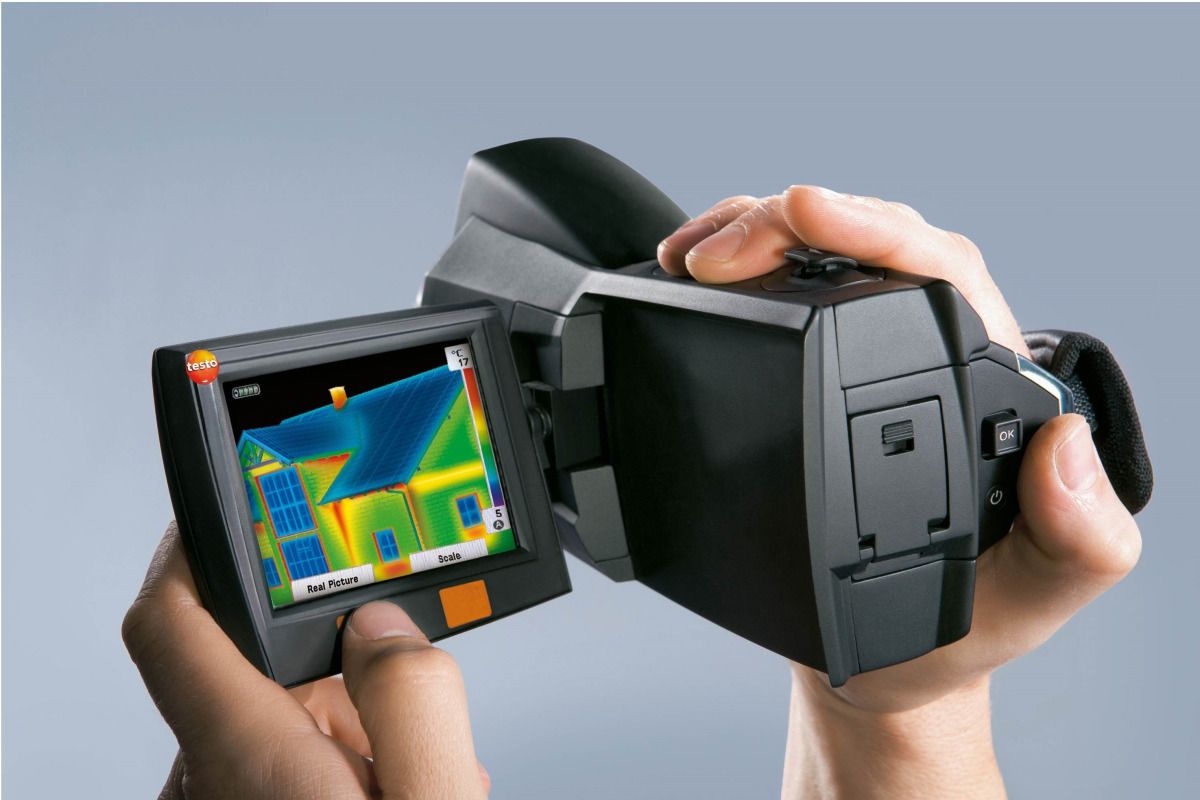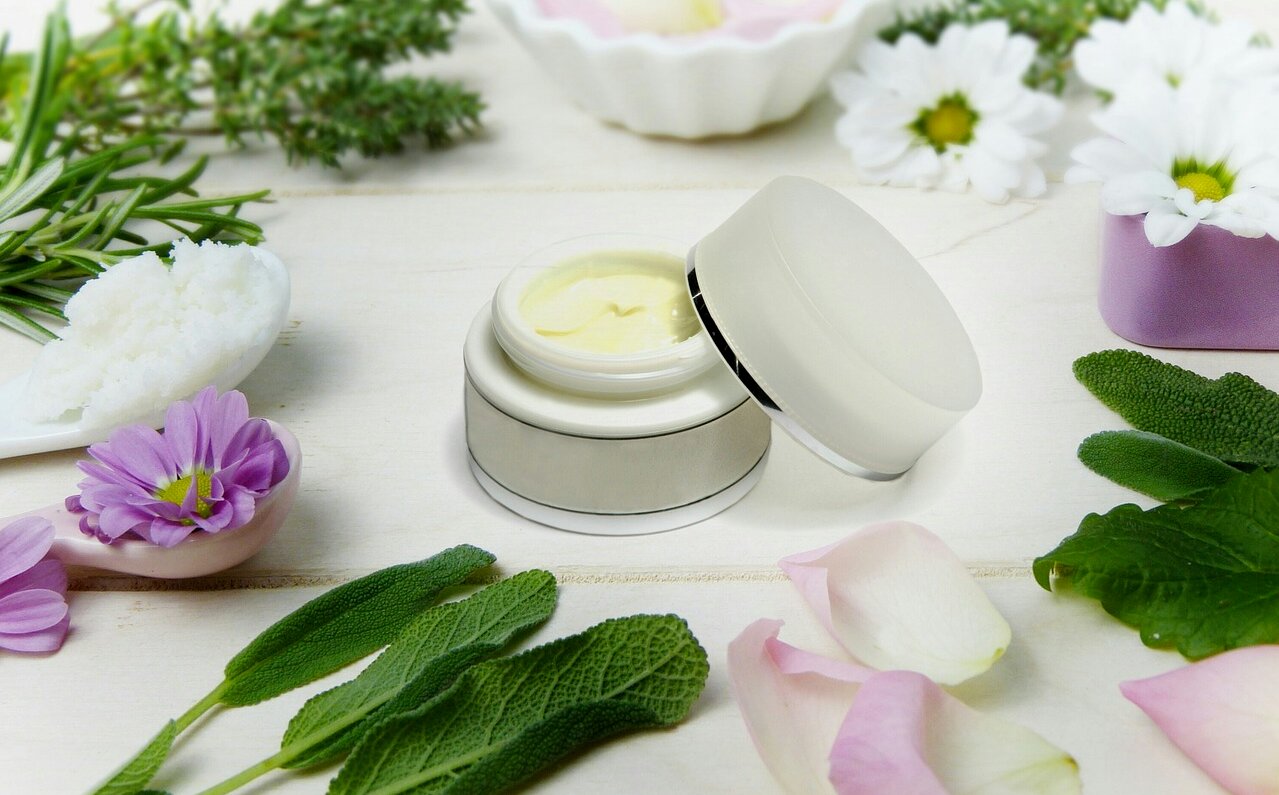Ranking of the best color blind glasses for 2022

One of the most well-known ophthalmic features is color blindness. Due to the numerous aphorisms or anecdotes devoted to this anomaly, in everyday life it is often associated with uncharacteristic symptoms and properties. This review presents the nature of the occurrence of this disease, its types, features, possible ways to improve the condition of patients with a similar diagnosis, and what to look for in order not to make mistakes when choosing specially designed optical devices.
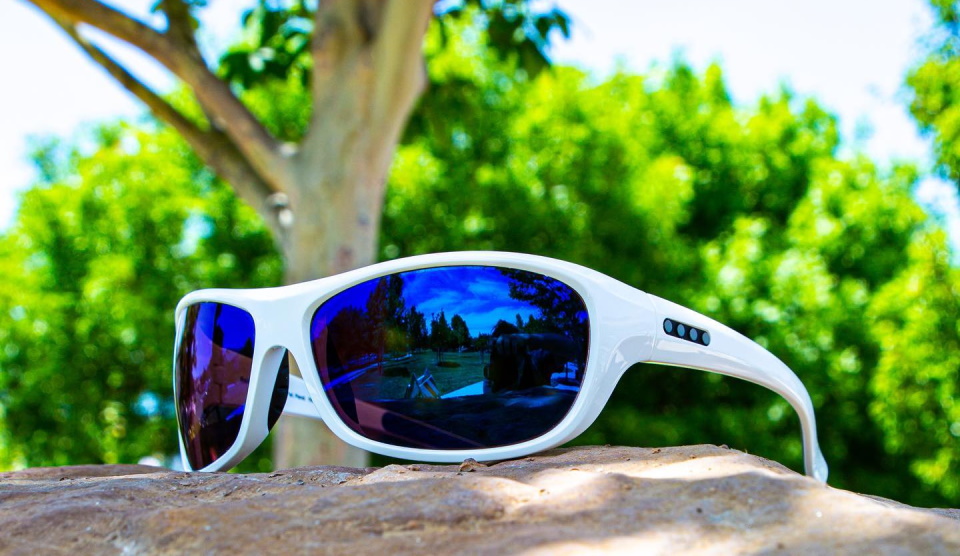
Content
General information
Color blindness is an acquired or hereditary condition of vision, expressed in the complete or partial loss of the ability to distinguish all or individual colors.
The level of the anomaly can change - for some, the world is presented in black and white colors, and for some, only one color is inaccessible to perception.
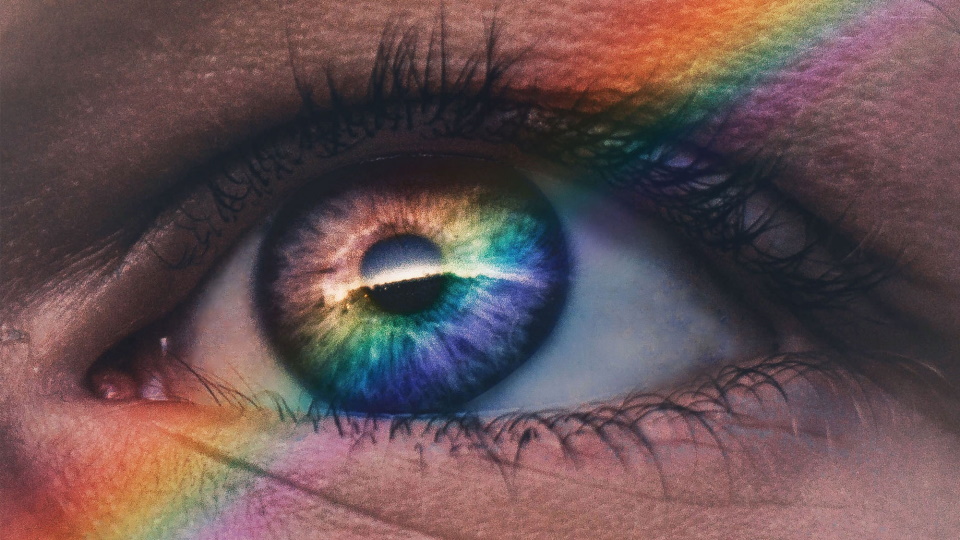
The phenomenon got its name from the English scientist John Dalton, who lived in the 18th century. At the age of 26, he suddenly realized that other people perceive colors differently than he himself. In his opinion, the jacket he wore was gray, although in reality this part of the wardrobe wore a dark red color. As a result, based on personal feelings, the topic of color blindness was developed in an innovative scientific work that influenced the development of medicine.
Color blindness does not threaten human health, but is a visual defect.
Visually, the picture of the surrounding world for color blind people looks different than for ordinary people.
Mechanism and causes of occurrence
In the eye structure, special nerve endings are responsible for color discrimination - cones located in the center of the retina. The normal state provides for the content of three color-sensitive protein pigments responsible for the recognition of primary colors: green blue, red. In ordinary people, called trichromats, in the brain, their combination opens up a complete perception of the rich palette of shades of the surrounding world. However, sometimes the pigments do not function correctly or are completely absent, which causes color anomalies.
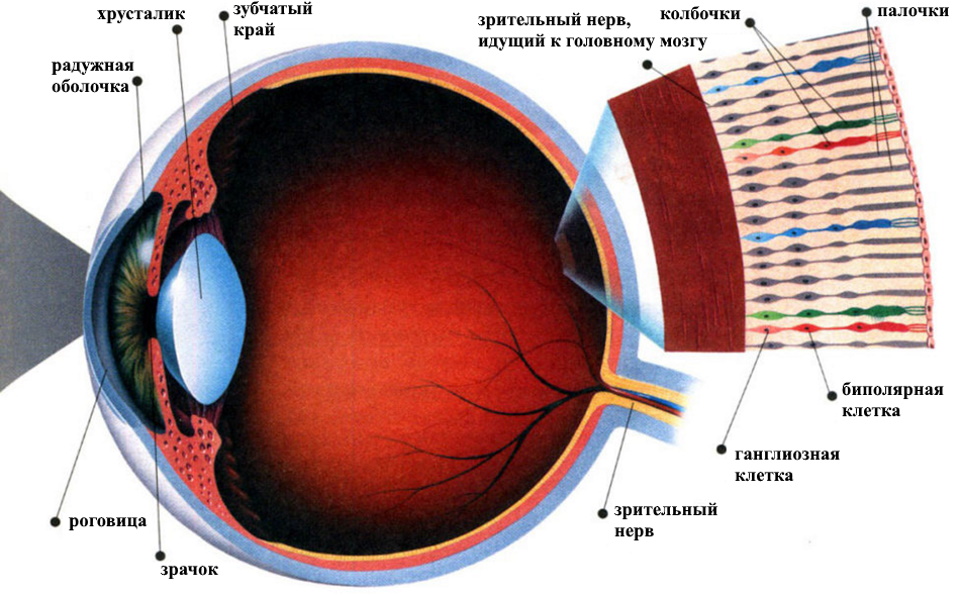
Color blindness occurs hereditary, i.e. congenital (more often), or acquired.
It is inherited from a mother with a mutated X chromosome, so it is more common in men. Pathology, in order to appear in a woman, must be observed simultaneously in both parents for the transmission of two mutated X chromosomes.
A color anomaly can be acquired as a result of an eye injury or disease, as well as due to the intake of certain medications. For example, in the case of clouding of the lens due to cataracts, light almost does not pass through it and does not reach the retina in full. As a result, there is a distortion of color perception, regardless of the presence and state of the cones.
Acquired color blindness is not inherited.
Kinds
The following types of color blindness are distinguished:
1. Monochromasia (achromasia) - the eye perceives only one primary color.
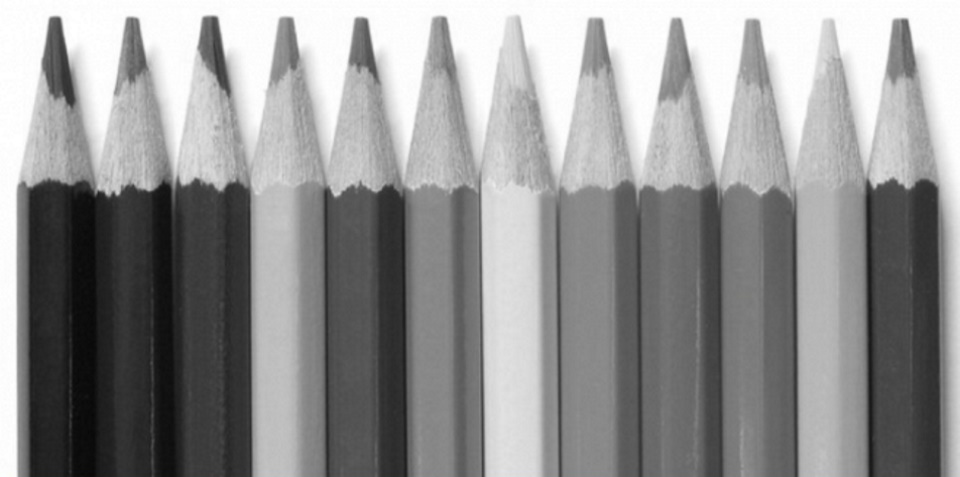
2. Dichromasia - the eye distinguishes two primary colors with the replacement of the third with existing shades:
- protanopia - no perception of red, replaced by dark brown and dark green, yellow - light brown, green - light gray, other colors with slight changes;
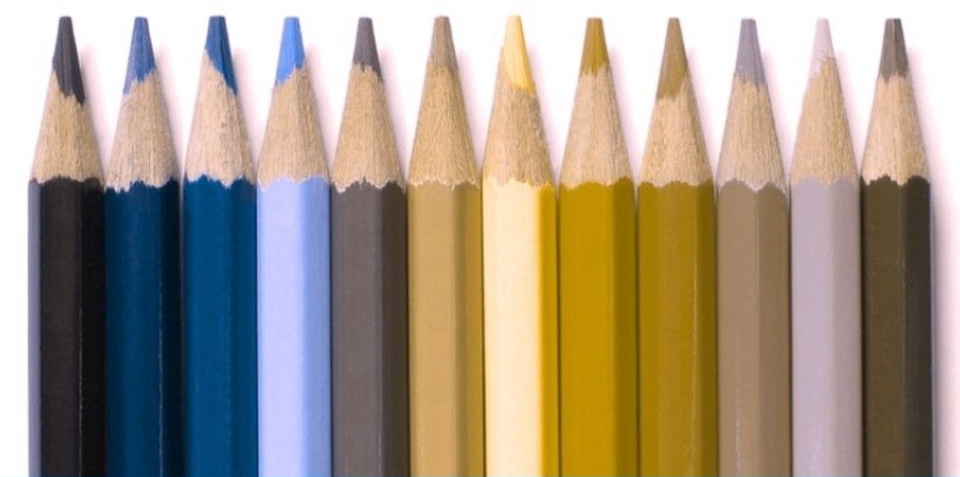
- deuteranopia - there is no green, other colors are perceived distorted and faded, and the person does not know anything about the anomaly;
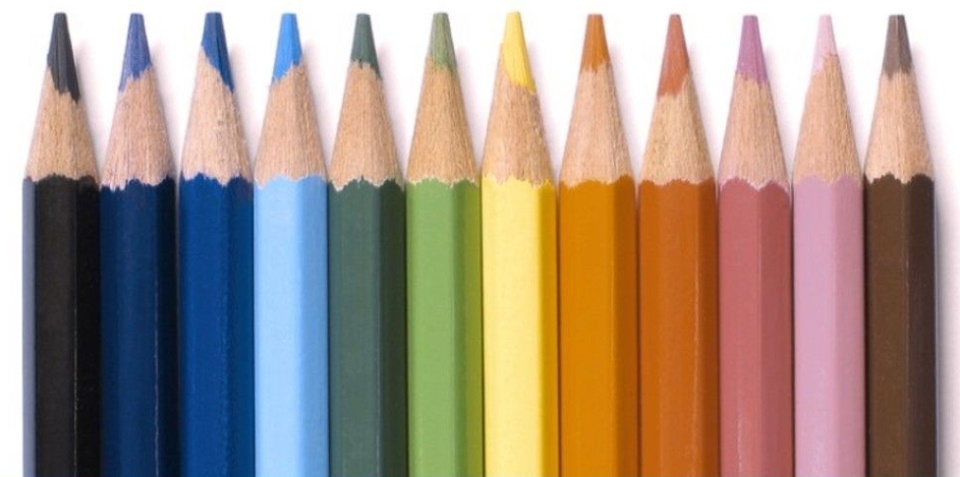
- tritanopia - no perception of blue, all images with shades of green and red.
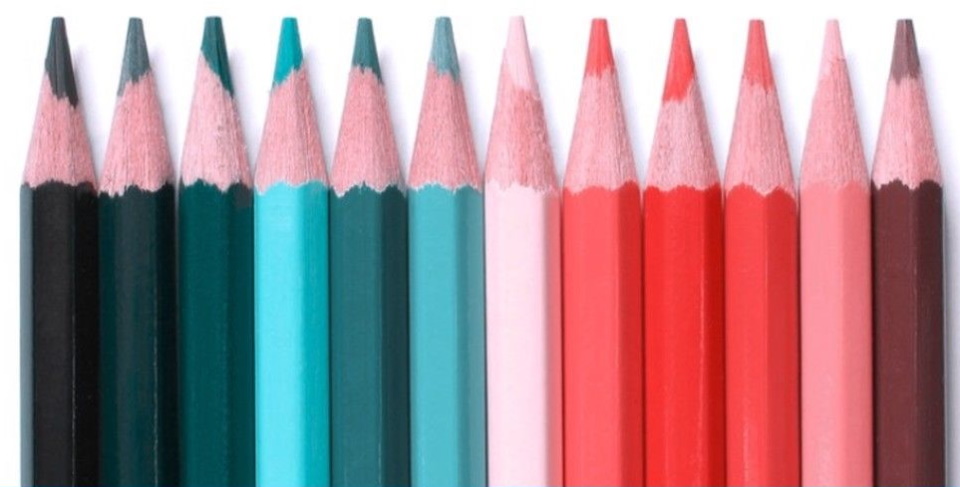
Diagnostics
In case of suspected failures in color perception, special tables, anomaloscopes, flickering lights or other methods are used.
The polychromatic tables of Yustova, Ishikhara or Rabkin, familiar to many, look like concentrated clusters of circles of different sizes with primary and secondary colors of the same brightness. Some of them, against the background of others, form some kind of figure, geometric figure or a meandering line.According to some tables, it is possible to identify not only a defect, but to specify the type of anomaly with its degree.
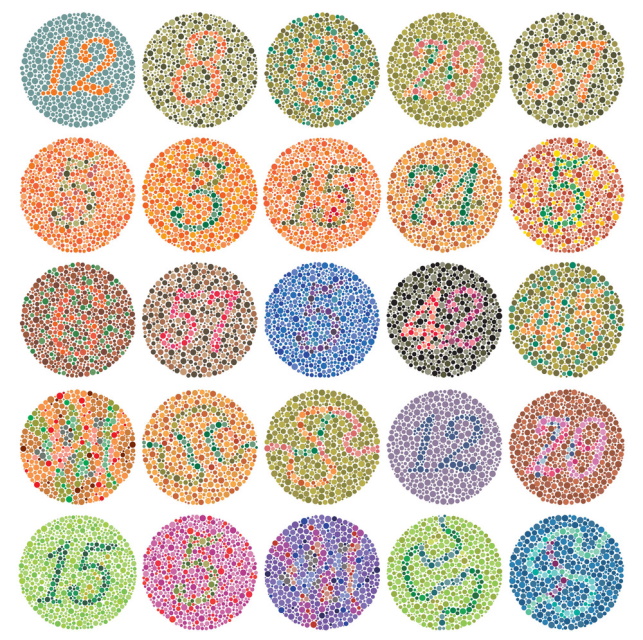
Correction methods
Currently, a magical way to get rid of color blindness has not yet been developed. Effective treatment, as well as prevention, is still lacking. At the same time, only the acquired disease is affected, first of all, the cause that provoked its development is eliminated. For example, in case of clouding of the lens, it must be replaced with an artificial one; If medications have a negative effect, they should be discontinued. In such cases, there is some probability that the pathology will not be so pronounced or even disappear without a trace.
In other cases, special optics are used for correction - lenses or glasses. The mechanism of their action is based on enhancing the perception of primary colors with vision closer to normal.
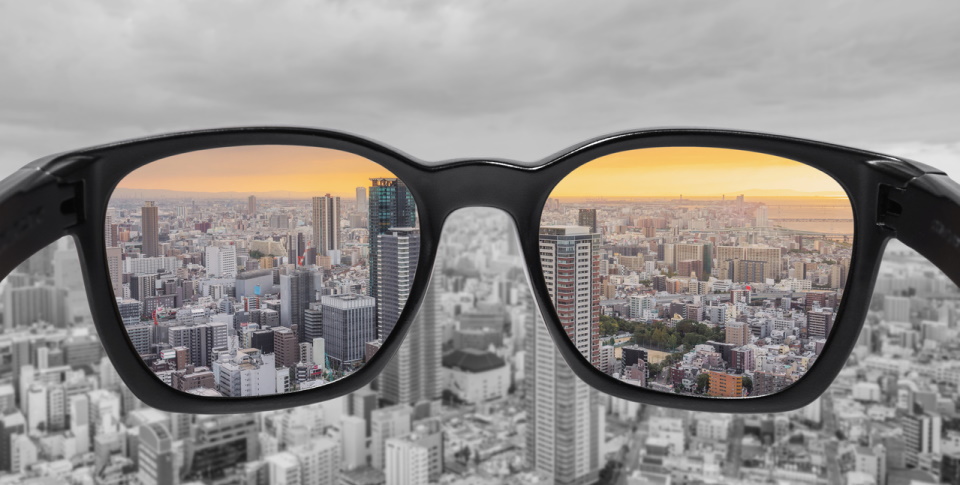
High-tech cybernetic devices and software have also been developed to help color-blind people in their work.
Now it is not yet possible to completely bring color blindness to normal vision.
Criterias of choice
- Each model of glasses is selected individually depending on the type of color blindness, the structure of the eyes and the comfort of the patient. Before buying, it is necessary to try them on and observe the individual reaction of the body.
- It is important to choose the right frame and lens type for the structure of the face.
- Separate lenses are effective only in natural light, and are useless at home.
- The most expensive model is not necessarily the best. There are high-quality analogues on the market at reasonable prices.
- The process of getting used to the optics can last for several days.
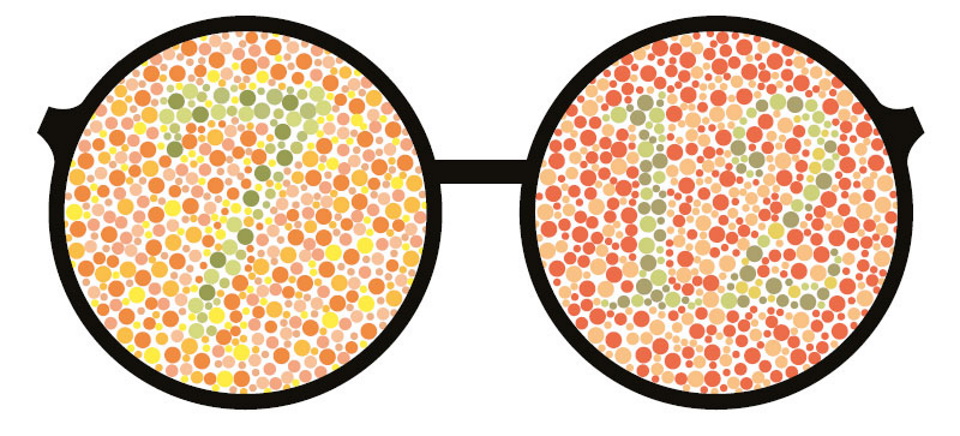
Choosing the Right Lenses:
- first, the definition with a type test;
- study of classification (A, B, C, D, E, F);
- selection of the optimal model for individual characteristics (anti-computer radiation, anti-glare, filter, frame type).
Where could I buy
Popular models and novelties can only be bought in branded stores offering optics. Consultants will give professional advice and recommendations - which company is better, how to choose, how much it costs. If necessary, there can be tested for color blindness, as well as check visual acuity.
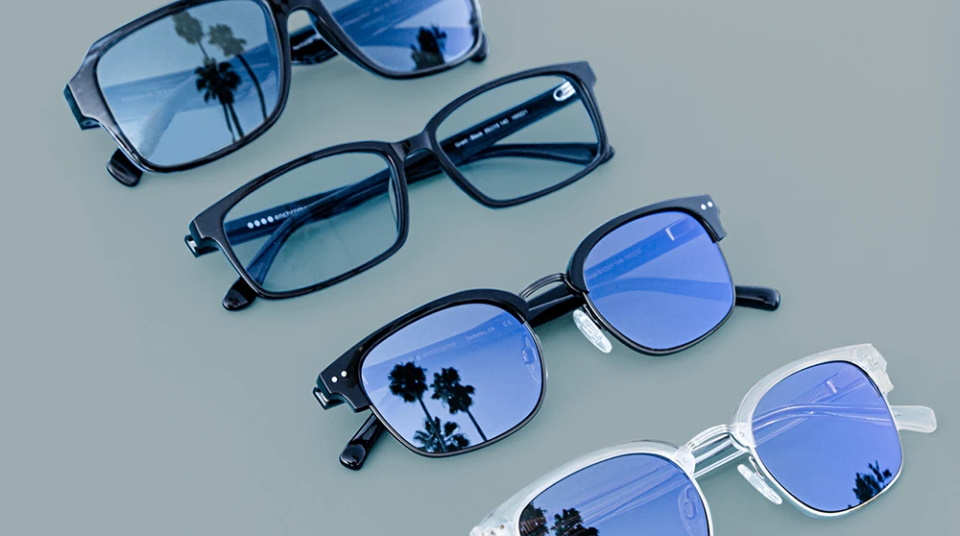
If it is not possible to choose the right model at the place of residence, online orders are available in online stores that represent products from well-known manufacturers with technical parameters, descriptions, photos and user reviews.
The best glasses for colorblind people
The rating of high-quality models is compiled according to the opinions of users who have left reviews on the Internet. The popularity of models is due to the functionality, parameters, efficiency, cost, customer ratings.
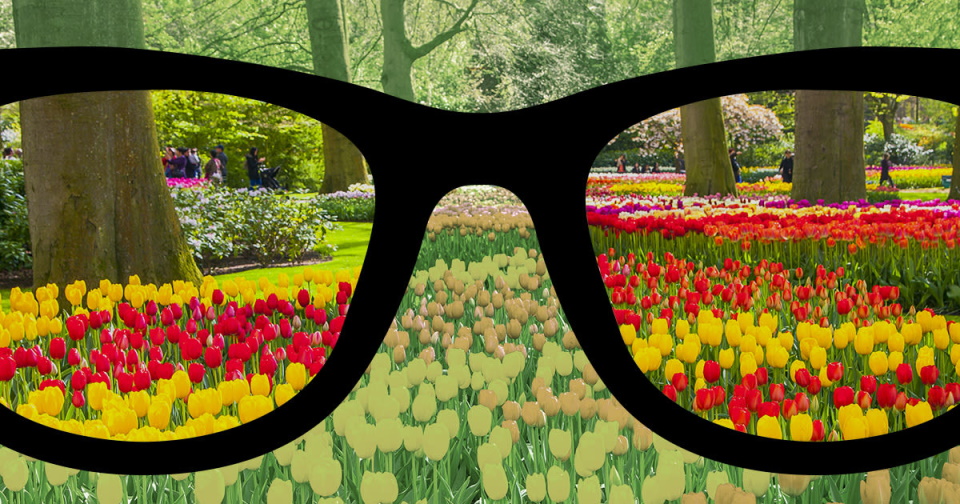
The review presents the products of the best manufacturers of color blind glasses - EnChroma and Pilestone.
TOP 3 best glasses for color blind EnChroma

Brand - EnChroma (USA).
The country of origin is the USA.
The company has been manufacturing glasses for people with color vision anomalies since 2012. Universal models are suitable for protanomaly and deuteanomaly, helping to see the world around us more clearly and brightly. The main property of the product is the increased color saturation of objects in sunlight. Indoors, they work in bright cold white lighting, which is closer to the sun.The most common are light options for indoors or darker options for natural light.
Eton Cx 1
A sporty model with a refined rectangular frame, sharp angles, a curved brow line and a beautiful bridge that adds extra chic to the look. Suitable for people with mild to moderate protanopia in low or artificial light conditions.
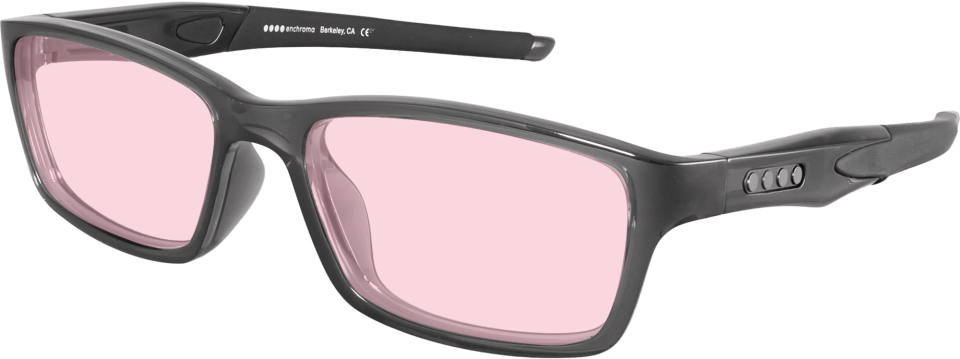
Price - from 30,000 rubles.
- the possibility of using artificial lighting;
- EnChroma proprietary spectral lens;
- long service life;
- easy cleaning from pollution;
- double anti-reflective coating;
- secure case.
- color blindness is not cured, but only corrected;
- high price.
Cyclotron Сх 3
Universal model with sharp angles, long curves, stylized temples for the correction of all degrees of deuteranopia and mild to moderate protanopia. The sporty frame combines speed and intent with style and personality. Sunglasses allow you to comfortably enjoy improved color perception. Constructed from durable material with tapered temples and adjustable temples for a secure fit.
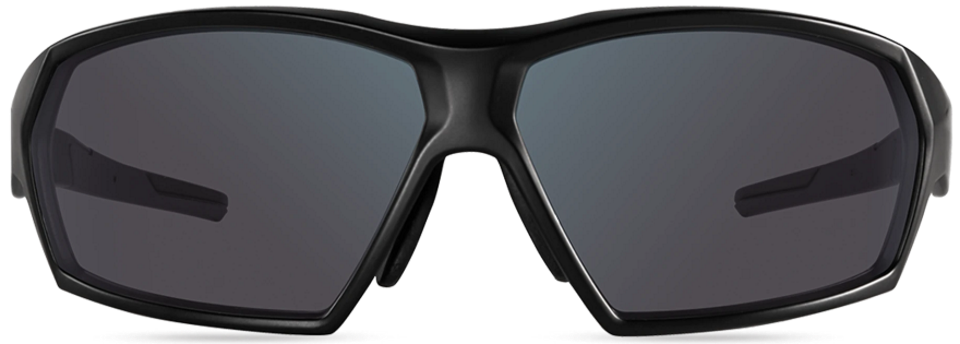
Price - from 30,000 rubles.
- proprietary technology for the manufacture of spectral lenses;
- reliable protection against ultraviolet rays;
- hard protective coating against scratches;
- double anti-reflective coating;
- water repellent surface treatment.
- high price.
Ellis Cx 3 Sun
Classic model with lenses that provide bright and contrasting colors, with 100% UV protection for people with red-green color blindness.TR-90 material is used for manufacturing, providing flexibility and durability of the product. Easily sits on the face, maintaining comfort throughout the day. Warranty - 2 years.

Price - from 30,000 rubles.
- the use of spectral lenses made using EnChroma proprietary technology;
- quality assembly;
- UV protection;
- long service life;
- double anti-reflective coating;
- easy removal of dirt.
- overpriced;
- delivery only on order.
comparison table
| Eton Cх1 | Cyclotron Сх3 | Ellis Сх3 | |
|---|---|---|---|
| Front side width, mm | 149 | 142 | 140 |
| Bridge width, mm | 18 | 13 | 18 |
| Lens width, mm | 53 | 67 | 34 |
| Lens height, mm | 35 | 44 | 41 |
| Temple length, mm | 138 | 130 | 145 |
TOP 5 Best Pilestone Color Blind Glasses
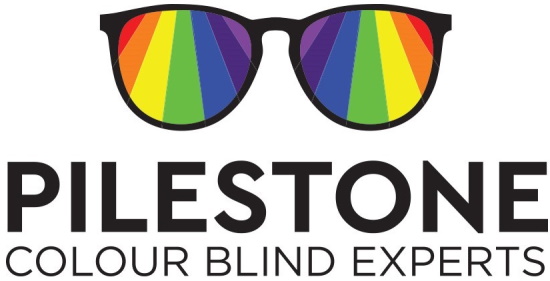
Brand - Pilestone (USA).
The country of origin is China.
The largest company officially offering glasses for color blindness correction. Pilestone lenses allow you to correct three types of color vision anomalies. Since 2017, more than 7.5 thousand pairs of glasses have been sold, which indicates the quality and effectiveness of the products offered.
The company offers several types of lenses.
| Type of color blindness | lens type |
|---|---|
| Mild to moderate deuteranopia | A (universal) |
| Severe, extra-strong deuteranopia | AT |
| Mild to moderate protanopia | A (universal) |
| Strong, extra-strong protanopia | B, D |
| Mild, moderate, severe tritanopia | E |
Pilestone TP-032
The classic model for color correction in adults of large or medium build. Shows the best results for deuteranopes and protanopops with strong and moderate, as well as in everyday life in well-lit rooms or in bright natural light.
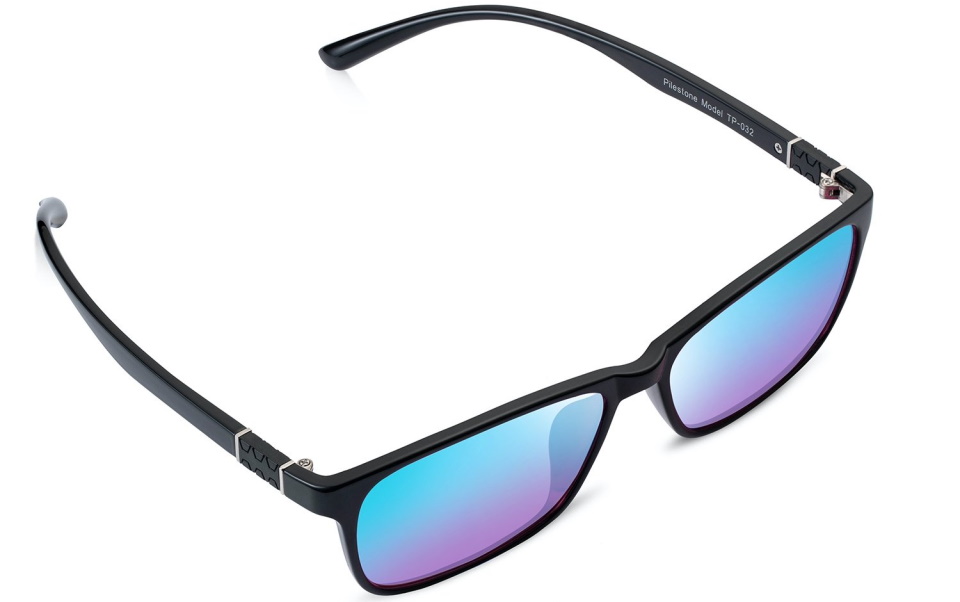
Price - from 9,890 rubles.
- special mirror anti-reflective coating;
- advanced light filtering technology;
- convenient use;
- stylish design.
- may fail in 10% of cases.
Using TP-032 as a video filter:
Pilestone TP-028
The original model for the correction of deuteranopia and protanopia of strong and moderate degrees. The application of external mirror coating technology hides the redness to others and use them as sunglasses. Allows you to perfectly cope with the screening tests of Ishihara or Rabkin during the medical examination for obtaining a driver's license. Produced in a plastic sports frame with lenses made of CR-39 polymer.
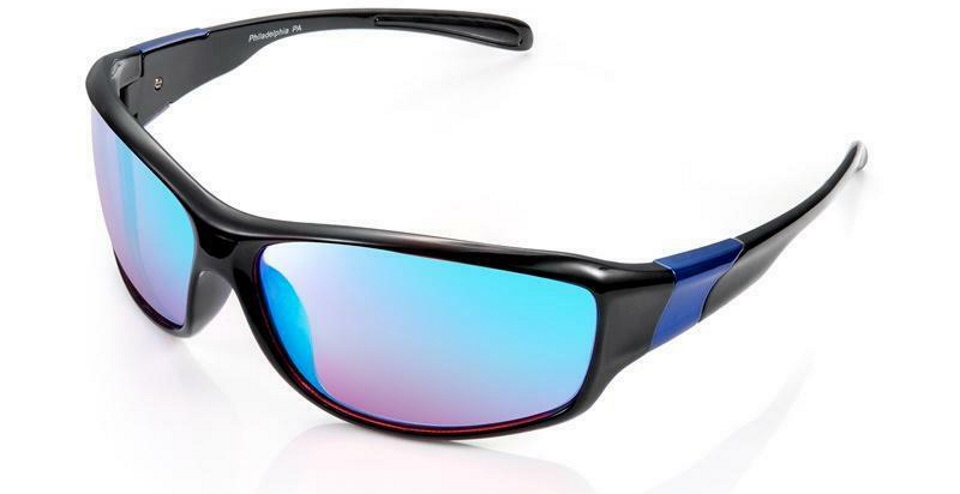
Price - from 9,490 rubles.
- universal application;
- comfortable use;
- high correction efficiency;
- branded storage case;
- stylish sports frame.
- the anomaly of color perception is not cured, but only temporarily corrected.
Pilestone TP-012
Stylish model for correcting red-green color anomalies of all degrees. Shows good results in natural bright light and works well indoors. When used, the clarity and brightness of color perception are improved, which greatly improves driving safety. It is made in a plastic frame with multilayer polymer lenses.
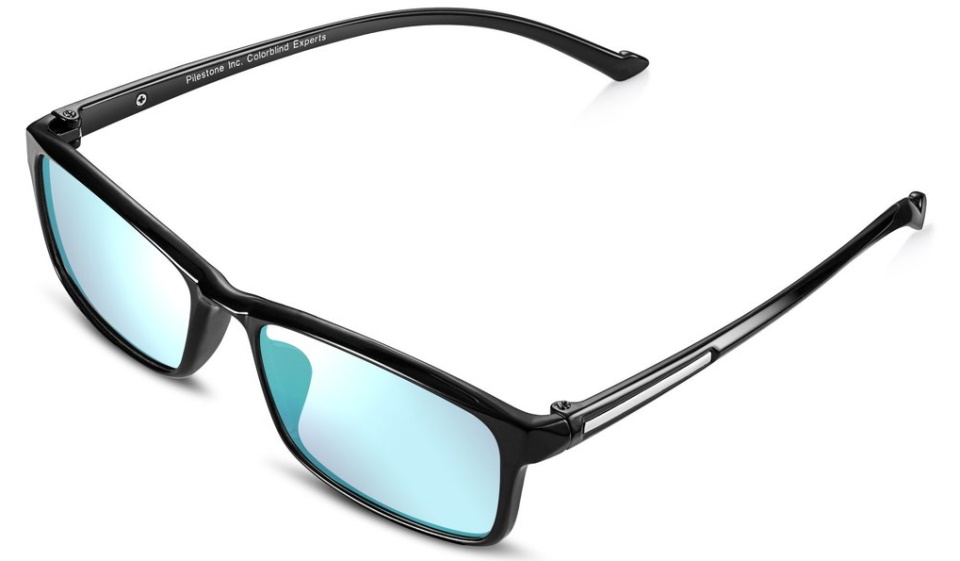
Price - from 8,790 rubles.
- correction of protanopia and deuteranopia;
- convenient use with the ability to drive a car;
- a confident feeling when crossing the road to a green traffic light;
- storage case;
- classic design.
- color anomaly is only temporarily corrected, but not treated;
- helps in 80% of cases.
Passing the test with TR-012:
Pilestone TP-021
A universal model for increasing the contrast and brightness of the perception of the surrounding world. Tinted glasses can be used in clear weather as sunglasses. Thanks to the use of external mirror coating technology, redness is hidden from others.
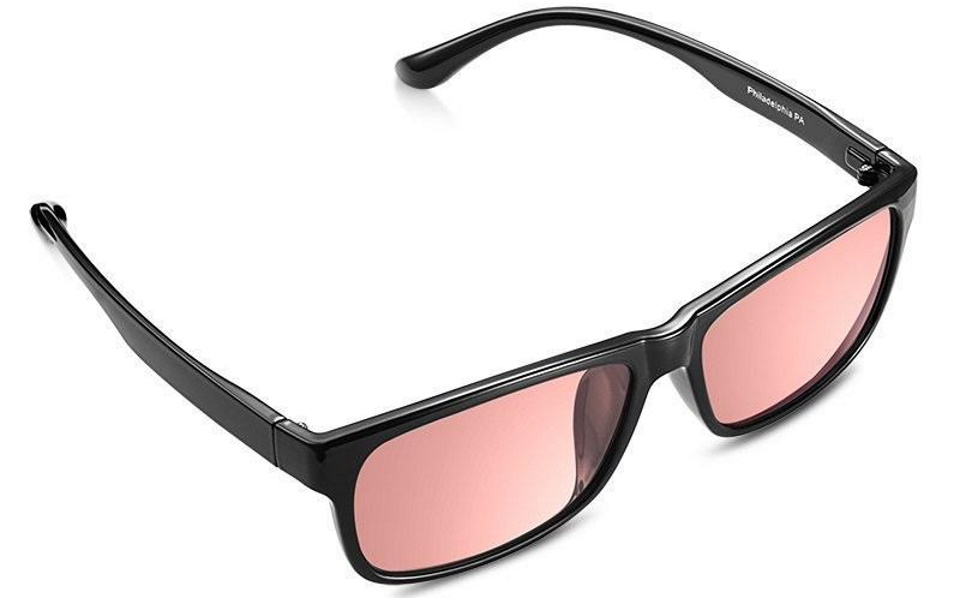
Price - from 7,690 rubles.
- the possibility of using as sunscreen;
- increased comfort;
- corporate case;
- original design.
- suitable for impaired perception of only the red-green spectrum;
- for 10% of clients with individual eye characteristics may not be suitable.
Pilestone GM-2
The most popular model that allows you to correct strong degrees of deuteranopia and protanopia, green and red spectra. Showed good results in both artificial light and natural light. It is a suitable option for testing with Rabkin tables, incl. during the medical examination to obtain a driver's license. Multilayer plastic lenses are enclosed in a plastic frame.
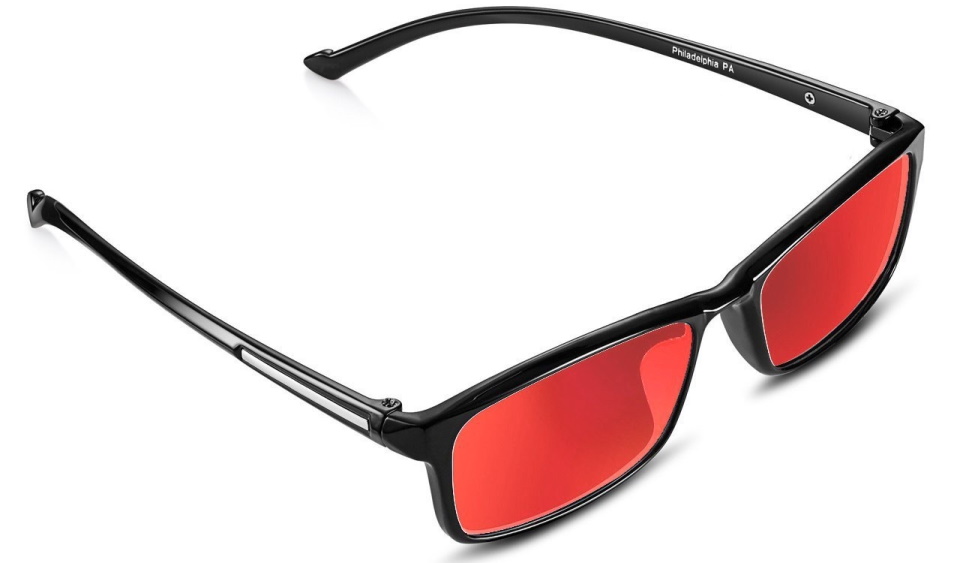
Price - from 8,790 rubles.
- correction of strong degrees of protanopia and deuteranopia;
- comes with a branded case;
- refund within two weeks after purchase if the glasses do not fit;
- original color.
- suitable only for violation of color perception of the green-red spectrum;
- for 10% of clients with individual eye characteristics and a high degree of color blindness, they may not be suitable.
Interesting Pilestone GM-2 Fact:
comparison table
| TP-032 | TP-028 | TP-012 | TP-021 | GM-2 | |
|---|---|---|---|---|---|
| lens type | AT | AT | BUT | C | D |
| Front side width, mm | 142 | 140 | 142 | 154 | 142 |
| Bridge width, mm | 17 | 17 | 17 | 17 | 17 |
| Lens width, mm | 53 | 58 | 53 | 60 | 53 |
| Lens height, mm | 33 | 45 | 33 | 38 | 33 |
| Temple length, mm | 150 | 150 | 150 | 150 | 150 |
| Service life, months | 12 | 12 | 36 | 12 | 36 |
Take care of yourself and your loved ones!
new entries
Categories
Useful
Popular Articles
-

Top ranking of the best and cheapest scooters up to 50cc in 2022
Views: 131649 -

Rating of the best soundproofing materials for an apartment in 2022
Views: 127687 -

Rating of cheap analogues of expensive medicines for flu and colds for 2022
Views: 124516 -

The best men's sneakers in 2022
Views: 124030 -

The Best Complex Vitamins in 2022
Views: 121937 -

Top ranking of the best smartwatches 2022 - price-quality ratio
Views: 114978 -

The best paint for gray hair - top rating 2022
Views: 113393 -

Ranking of the best wood paints for interior work in 2022
Views: 110317 -

Rating of the best spinning reels in 2022
Views: 105326 -

Ranking of the best sex dolls for men for 2022
Views: 104363 -

Ranking of the best action cameras from China in 2022
Views: 102214 -

The most effective calcium preparations for adults and children in 2022
Views: 102010

